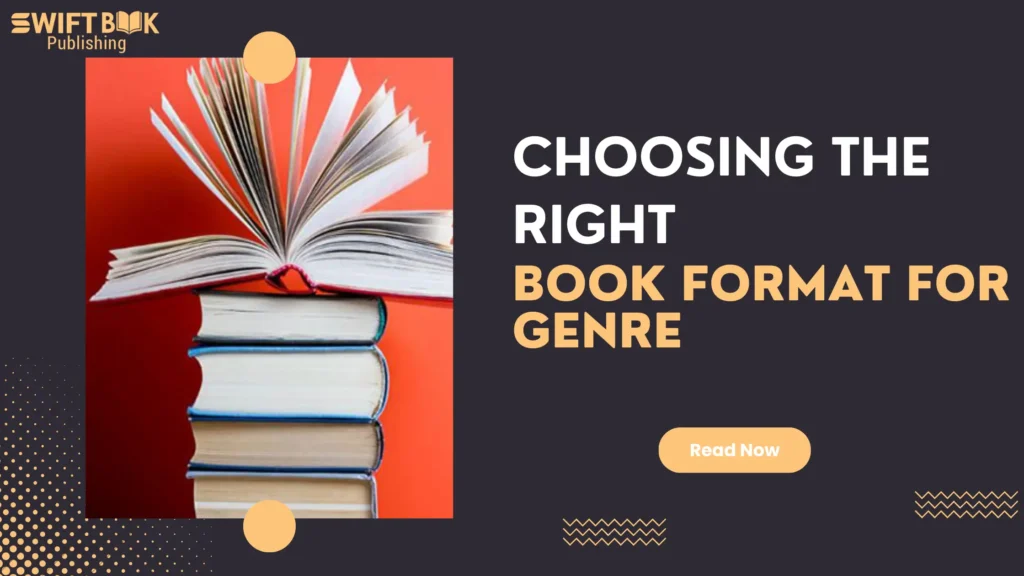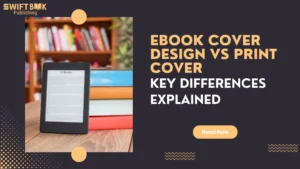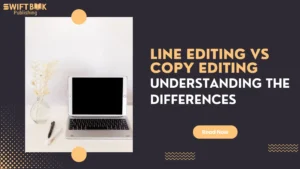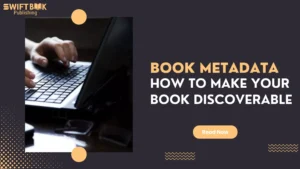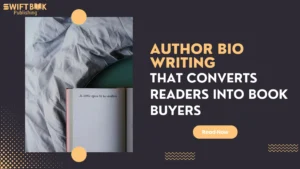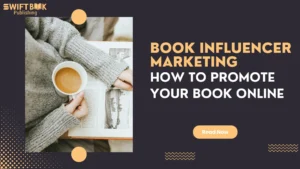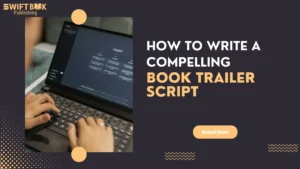You’ve written the book, edited it to death, and now comes the bit no one warns you about: picking the format. Do you go for paperback? Hardback? eBook? Maybe even audio? Here’s the thing: your genre plays a big role in what format works best. Some readers love the smell of a thriller in paperback. Others won’t touch a cookbook unless it’s hardback.
So before you jump into production, let’s talk book formats for genres, what works best for each, and why it’s worth doing it right the first time.
Why Format Choice Matters
It’s easy to think a book is a book, no matter the shape or size. But the format you choose affects everything, from printing and pricing to reader expectations and shelf appeal. Genre isn’t just about story; it’s about packaging. A children’s picture book won’t work as an eBook, just like a 700-page fantasy epic doesn’t exactly scream “perfect for a quick read on your phone.”
When you’re self-publishing, choosing the right format is part of the job. And unlike in self-publishing vs traditional publishing, where publishers make these choices for you, you’ll have to make the call yourself, or with help from professionals who know what works.
The Main Formats and What They’re Best At
1. Paperback
Ideal for: fiction, memoir, non-fiction, YA, romance
Paperbacks are the go-to for most indie authors. They’re affordable, lightweight, and widely accepted by readers. For genres like romance, thrillers, and memoirs, paperback is often the first format readers look for. If your book’s length is manageable and your audience is casual readers, this format just makes sense.
Paperbacks also work well for giveaways and marketing events, especially when paired with strategies like book influencer marketing or promotional campaigns.
2. Hardback
Ideal for: fantasy, historical fiction, literary fiction, cookbooks, children’s books
Hardbacks scream “collector’s item.” They’re more expensive to print and buy, but they offer durability and a premium feel. If your genre leans toward prestige, think literary fiction or detailed non-fiction, hardback might be the better fit.
Children’s authors often choose this format for durability, especially when they collaborate with children’s book illustrators for full-colour, high-impact visuals.
3. eBook
Ideal for: virtually every genre, especially non-fiction, romance, self-help, and short reads
eBooks are all about accessibility. They’re perfect for readers who prefer convenience, and they’re essential for authors looking to keep costs low and reach global markets. If you’re targeting a digital-savvy audience or writing shorter books, this format is non-negotiable.
Working with a professional on an ebook cover design vs a print cover makes a big difference in how your book performs in online stores. eBooks are also ideal if you’re interested in repurposing book content for other digital platforms.
4. Audiobook
Ideal for: memoirs, self-help, fiction, inspirational books
Audio is booming. More readers are turning to audiobooks during commutes, workouts, or just to relax. But not every genre suits this format. Books that rely heavily on visuals (like children’s books or cookbooks) don’t translate well.
On the flip side, memoirs with personal stories, self-help titles, and fiction with engaging narration styles do incredibly well. Choosing the right audiobook narration styles is key. Your narrator can make or break the listening experience.
If you’re exploring Audiobook Services, make sure you’re also considering things like distribution, narrator fit, and audio quality.
How Genre Influences Format Choice
Let’s take a quick look at how genre plays into which formats usually work best:
|
Genre |
Best Formats |
| Romance | Paperback, eBook |
| Fantasy | Hardback, Paperback, eBook |
| Memoir | Paperback, Audiobook, eBook |
| Non-fiction | Paperback, Hardback, eBook, Audiobook |
| Children’s Books | Hardback, Paperback |
| Self-help | eBook, Audiobook, Paperback |
This isn’t a strict rulebook, but it’s a solid place to start. Your readers will expect certain formats based on what they’re used to seeing.
The Role of Professional Formatting and Metadata
It’s not just about format. It’s about how your book is prepared for that format. That’s where professional formatting partners come in. They’ll ensure your print and digital versions meet industry standards. No weird margins, no broken lines, no dodgy fonts.
And don’t forget about book metadata, the behind-the-scenes details like keywords, categories, and descriptions that help readers actually find your book. Formatting gets your book looking right; metadata gets it seen.
What About ISBNs and Distribution?
If you’re handling your own publishing, you’ll need to sort out ISBNs and barcodes for books. Each format, print, digital, and audio, needs its own ISBN. It’s how bookstores, libraries, and distributors track your book.
Getting this right from the start means smoother distribution and fewer headaches when you’re ready to launch. It also helps with things like fact-checking nonfiction books, as your references and citations are tied to the right edition.
Creating Multiple Formats the Smart Way
Publishing your book in more than one format helps widen your reach. But each format needs to be carefully adapted. Don’t just copy-paste your print layout into an eBook or read your chapters into a mic and call it an audiobook.
Work with experts who understand the difference between line editing vs copy editing, ebook cover design vs print cover, and what goes into a proper book trailer script. And if you’re creating an audiobook, match the narrator’s voice to your tone and genre for the best impact.
Don’t Forget the Author Side of Things
No matter what format you go with, you’ll need a strong author bio writing piece to sell yourself to your audience. It also helps build your brand, especially if you’re putting effort into author platform building and long-term visibility.
Conclusion
Picking the right book formats for genres is about more than just preference. It’s a decision that shapes how readers experience your story. Whether you’re putting together a vibrant children’s hardback, a snappy eBook, or a powerful memoir in audio, choosing the right format can be the difference between a book that sits on a shelf and one that truly connects with readers.
And when in doubt, don’t go it alone. Whether you need help with layout, covers, distribution, or getting your files ready for print or digital, there are teams and services that can support you through it all.
Still weighing your options between formats or publishing models? You might want to check out our post on self-publishing vs traditional publishing to figure out which publishing path matches your goals.
